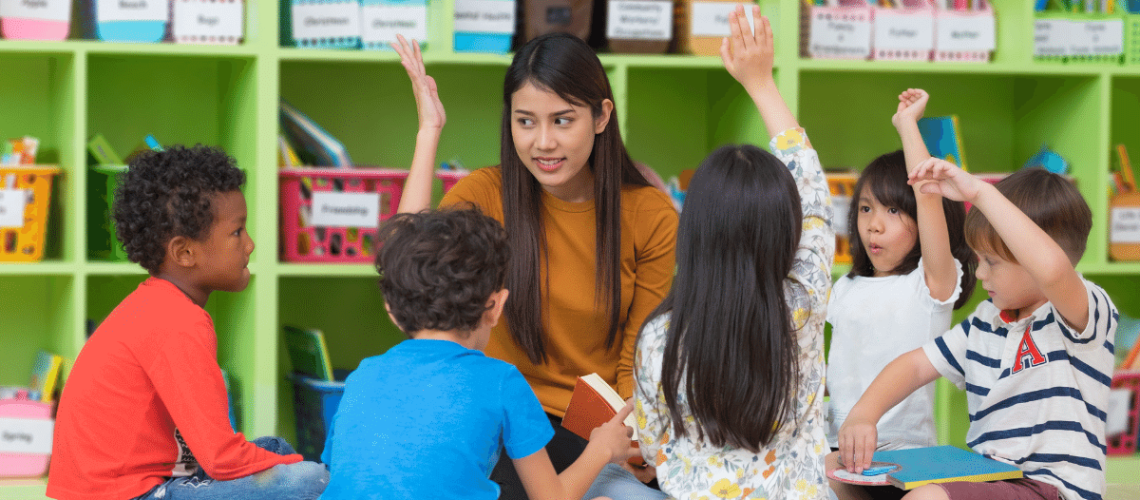Over the past decade, research into ACEs has shown that childhood trauma is far more pervasive than previously believed. In many cases, classroom staff may know nothing of a child’s past trauma or why a past experience was difficult for a child to process.
We do know that overwhelming stress has a profound short- and long-term impact on a child's brain structure and development, their physical and mental health, and their behavioral functioning.
And we do know that in class, this can show up as students who are prone to anger, who may be depressed and withdrawn, or who become uncooperative, distracted, or defiant.
And unfortunately for these kids, learning can also be a struggle.
These 7 Proven Trauma-Informed Responses Will Help You Connect With Kids In Your Classroom
Guidelines suggest that an open curiosity around their behaviour and a warm, stable environment fosters the connection that children need to overcome their past difficult experiences and thrive.
But the steps to creating that environment aren't quite so clear.
This post explains how Hand in Hand’s philosophy and approach falls in line with the ARC theoretical framework for trauma-informed care. As an attachment-based, emotion-focused, resilience-building program, the Hand in Hand tools directly support children’s social and emotional health and are well attuned for use in the classroom.
Here are seven trauma-informed responses you can use to connect well with kids in your classroom.
Connect Daily
All children are craving connection and you’ll be encouraged to see how even little boosts make a difference.
A smiling hello using a child’s name lets a child feel seen in a crowded corridor. Taking a minute to stop and ask “How was your weekend?’ or “How did that math assignment go?” helps students feel cared for.
Nicholas Provenzano of The Nerdy Teacher talks about handing the first five minutes of class time over to his kids to reconnect with them and noted how these catch-ups help him engage personally with each child. “Those connections I have made during those five minutes have made a lasting impact on student engagement and relationships,” he adds.
If you are online, try holding “office hours” and invite your students to stop by, check in, ask for help or just chat.
Help Children Find Their Voice
In a system designed around standardisation and conformity, where classrooms are busy and staff are taxed, children’s voices often get lost.
Here’s a way for them to reclaim some power.
When a child feels confused or overburdened, or if they feel powerless in the face of bullying or harsh words, pushing palm to palm can be an empowering way to help a child find their voice.
Ask them to push as hard as they like against your hands and offer some words to counteract the injustice they are feeling – “How dare you” or “I won’t let you push me around” or whatever words are appropriate and help to redress some power imbalance.
Even when invitations to try this are met with rolling eyes or nervousness, with some gentle encouragement students soon get the hang of it and if you can use this time to bring a smile to a student’s face or cause laughter, you know that they are releasing pent-up stress and anxiety.
Use Playful Limits
When children are resistant to instruction, it’s common to issue threats or punishments. However, kids can respond beautifully when teachers adopt a more playful approach.
Chasing a child back to their desk provides the warm comfort of your control without any blame or shame, and the resulting giggles that are most likely to escape from the child reduces tension.
You might also try getting at a child’s level, pausing a few moments, making eye contact, and warmly repeating your request for a behavior to stop.
You can read more here about setting warm, playful limits in school
Listen After You Set A Limit And Build Resilience
When off-track behavior occurs in the classroom, taking a student outside and listening to them let off steam for a couple of minutes can work really well to cool the heat. You may have to listen about why the child thinks a lesson is boring or how a teacher is “being mean,” but taking a calm and empathic interest in what is happening for them can be exactly what they need to be able to return to the lesson feeling calmer and ready to pay attention.
Giving them this time and space is more restorative than punitive measures, a response that increases stress for the teacher as well as the student.
If all classroom assistants were taught how to listen this way, the impact would be school-wide.
Use Special Time To Increase Connection and Co-operation
Have you ever seen the look of wonder on a child’s face when you tell them that for the next two to ten minutes they are in charge?
It’s priceless.
Special Time is a one-on-one tool that warms a child’s connection with a caregiver.
Set a limit that you won’t interrupt other staff or students, and then offer that you will let the child lead play for a set time. Join in, wholeheartedly, following their requests and orders.
Teachers and classroom assistants we know have played hide-and-seek in the corridors, had pillow fights and indoor ‘snowball’ fights with students.
Initiating laughter is a powerful and overlooked way to help children relax and feel heard, and can melt blocks of resistance. One Social and Emotional Learning specialist who uses Hand in Hand strategies recalls that after two minutes of Special Time with a boy who had previously refused to pick up his pencil and write a single word, he returned to class and quickly wrote a paragraph.
Such clear “successes” are not always guaranteed, but responding to challenging behavior with the trauma-informed response of curiosity and warmth serves the child’s emotional health well, and allows for moments where repair and resilience can occur.
Stop Trying To Fix Problems or Find Solutions
Just deeply listening to a child without any agenda or thinking that you have to ‘fix’ can powerfully help a child to heal and grow.
Welcome whatever they are feeling, be it boredom, hopelessness, anger or frustration with empathy and warmth.
Instead, shining a full beam of your enthusiastic approval and confidence towards their overall goodness and capabilities can boost self-esteem and restore their natural willingness to co-operate and participate more fully in classroom life.
Start Small but Aim Big
Making any kind of change in a school can be like trying to turn an ocean liner. It’s hard and can take a long time.
Allies are invaluable and trust needs to build over a long time. The payoffs are worth it.
Receiving failure as a chance to learn and adapt and approaching situations with warm curiosity and care for your learning team will foster the same warm and stable atmosphere for them that you are building for your students.
Creating a trauma-informed environment for your students can be challenging. It means reversing habits, encouraging new ones, often doing things that seem at odds with the norm, and responding in ways that can feel counter-intuitive.
You may find that your own unresolved childhood experiences get triggered and noticing them and working through them will help to keep you energised and support a hopeful attitude.
Persist and you will see breakthroughs. You will see students who are focused and co-operative and who are engaged and invested in their worth and learning.
Not much beats coming home from a day with your students knowing, with a whole heart, that you have made a difference to a child. That you have made things easier where once it was hard.
Have you tried bringing trauma-informed responses into your classroom?
Bring Connecting Tools To Kids You Work With
There is a proven trauma-focused approach you could quickly implement in your work that gives you the tools and the understanding to reach struggling kids and families, and see them thrive.
Over 8 weeks you’ll experience the profound and lasting changes that the five tools in this approach can bring to your work. They ensure that you meet parents and children where they struggle most and allow you to show up with compassionate solutions you can all use to reconnect and grow.
Learn more about our 8-week Professionals Intensive.

